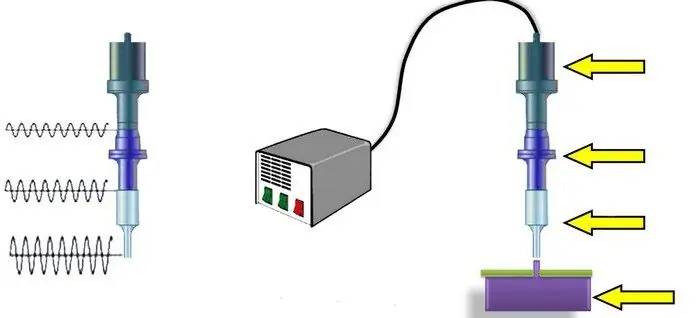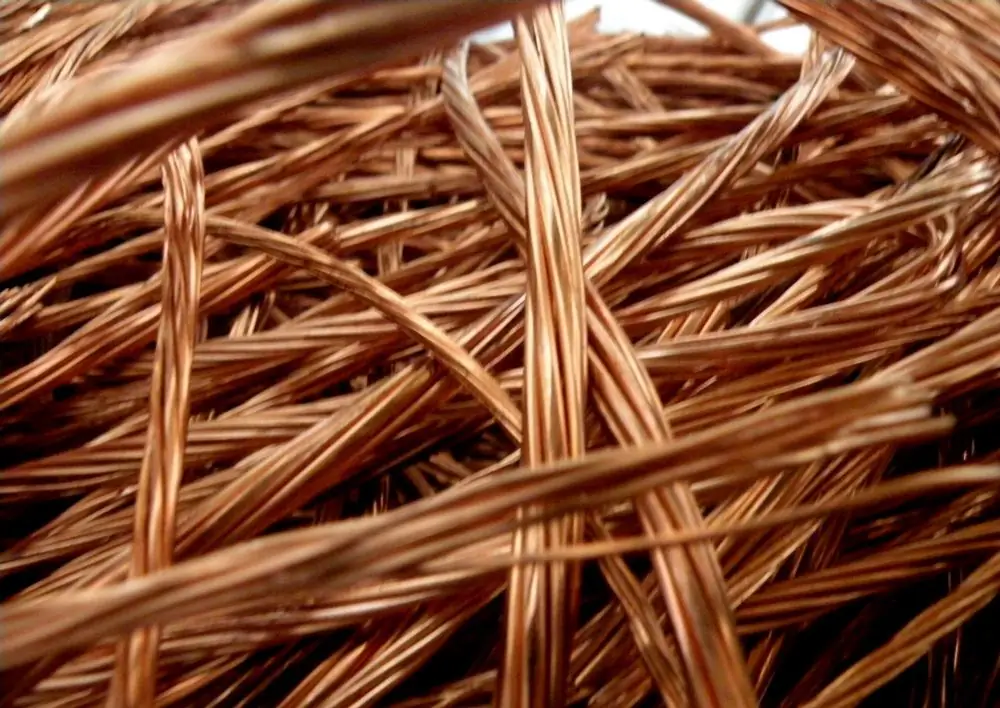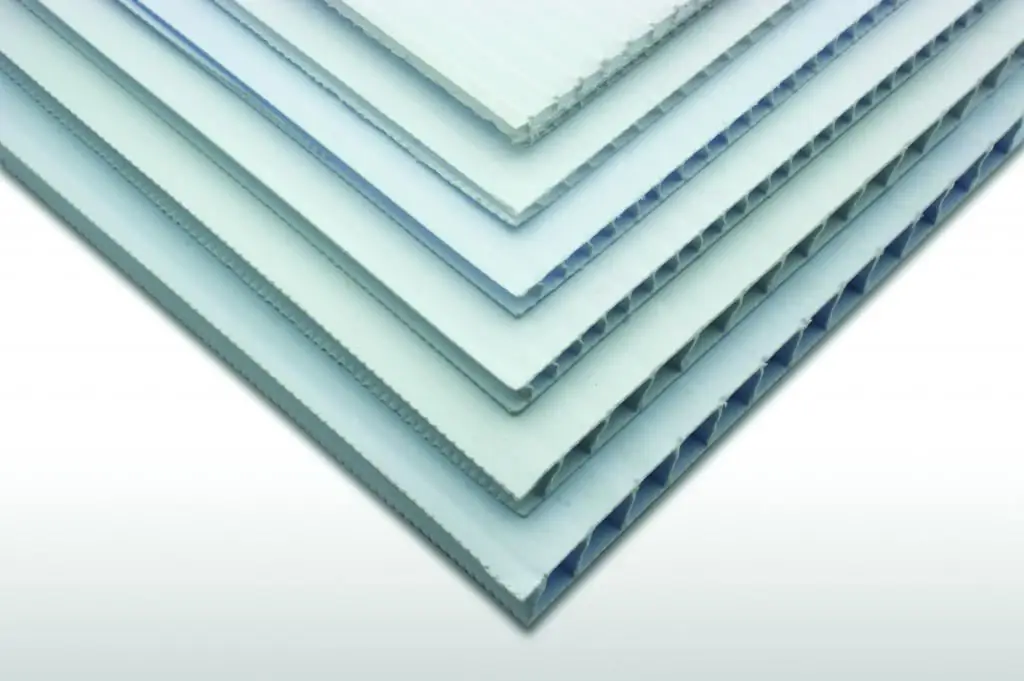2026 Author: Howard Calhoun | [email protected]. Last modified: 2025-06-01 07:12:56
Connection of metal structures by welding is the most common method in construction, instrument making, production of machines and mechanisms. In the welding process, two surfaces are joined after the base metal is melted by heat. An additional deposited element is used, which, after cooling and crystallization, forms a weld, or surfacing. Welding material is introduced into the working space by a consumable, current-carrying, non-consumable electrode or gas welding. In the process of work, welding materials do the work:
- when melting, moving in an arc, being in a bath, solidifying protect the molten metal;
- alloy and deoxidize the metal by adjusting the chemical composition of steels;
- remove oxides, slags, phosphorus and sulfur from filling the seam;
- free the joint mass from nitrogen and hydrogen.

Classification of materials for welding
The large number of materials required to join metals by welding makes it difficult to accurately classify, but the main welding materials are classified as follows:
- filler wirefor welding and surfacing;
- for arc welding stick electrodes;
- wire and plate electrodes for slag welding;
- filler additives of non-continuous, solid, tubular section;
- filler drawn, rolled, drawn cast rods and wires, powder-coated welding tapes;
- flammable gas or oxygen;
- welding equipment, compressor;
- gas containment cylinders;
- generator for producing acetylene from calcium carbide or pressurized acetylene bottle;
- Reducer to reduce the pressure of welding gas;
- torches for welding, hardening, surfacing with a set of necessary types of tips of different diameters;
- rubber hoses to move oxygen;
- fluxes and powders for welding.
Fusible wires, plates and rods
This type of electrode is used for welding in shielding gases, submerged arc, electroslag. Steel wire, as a welding material, is divided into high-alloyed, low-carbon and alloyed. In total, 77 types of similar products are determined by assortment. Selecting the required grades, change the chemical composition of the seam. Typically, a wire composition similar to the metal being welded is used. The characteristic of the welding material must comply with GOST and is indicated on the package.
Alloyed and low-carbon steels for wire production are divided into copper-plated and non-copper-plated. For manual welding, wire is used, chopped into pieces with a length of 360 to 400 mm. Supplied to the consumerskeins weighing from 20 to 85 kg. All coils are equipped with labels indicating the manufacturer and technical parameters of the wire.

Plates are used for electroslag welding. Arc manual welding is performed using a specially coated metal electrode rod called an electrode. The electrodes are divided depending on the thickness and composition of the deposited layer and the quality of workmanship. According to the thickness, a particularly thick, medium and thin coating is distinguished. Three groups in GOST serve to divide electrodes depending on the manufacturing accuracy and the content of sulfur and phosphorus in the coating composition. The type of welding material coated with stabilizing, binding, deoxidizing, alloying components is indicated by the letters:
- acid coating - A;
- basic classic - B;
- cellulose coating - C;
- mixed materials in the surface layer - P.
Non-consumable welding rods and electrodes for machine welding
To connect surfaces in shielding gases, special welding materials are used. The definition of such welding is given as a process using an electric arc between the electrode and the surface as a heat source. Round tungsten electrodes with a diameter of 5-10 mm supply electric current to the arc region. Pure tungsten is used as a material or additives of oxides of lanthanum, yttrium, sodium dioxide are added. Tungsten itself cannot be replaced by a cheaper metal, since it is the mostrefractory, with a high boiling point (5900 ºС) and is used for welding with direct and alternating current.
Using oxygen
Oxygen is heavier than air, it contributes to the combustion of gases and vapors at high speed, while heat is released and a high melting point is reached. The interaction of compressed oxygen with fatty oils and lubricants leads to spontaneous ignition and explosion, therefore, work with oxygen cylinders is carried out in clean conditions, without the danger of such contamination. Storage of oxygen-type welding consumables is carried out in compliance with fire safety standards.

Oxygen for welding is technical, obtained from the atmosphere. The air is treated in special separation apparatus, carbon dioxide impurities are removed, and the final product is dried. Liquid oxygen for transportation and storage requires special containers with increased thermal insulation.
Using acetylene
Acetylene is a compound of oxygen and hydrogen. This combustible gas at normal temperature is in a gaseous state. Colorless gas contains impurities of ammonia and hydrogen sulfide. The flammable component of the material is hazardous. Welding pressure over 1.5 kgf/cm2 or accelerated heating up to 400 ºС is sufficient for an explosion. Gas is produced by an electric arc discharge, which promotes the separation of liquid combustible components or by the decomposition of calcium carbide under the action of moisture.
Gas substitutes for acetylene
Requirementsto welding materials allow the use of vapors of liquids and other gases for operation. They are used if the heating temperature is twice the melting rate of the metal. For the combustion of different types of gases, one or another amount of oxygen entering the burner is required. Flammable substances instead of acetylene are used because of their low cost and the possibility of widespread production. They are used in a wide variety of industries, but the use of substitutes is limited by their relatively low heat limit.

Wire and welding fluxes
Unknown wire of an unidentified brand is not used for welding. The surface of the filler wire is smooth, free from rust, scale, grease. It is selected according to the melting index, which is lower than this characteristic for the steels being welded. One of the qualitative properties of the wire is its gradual melting without a sharp splash. As an exception, if the required wire is not available, for welding brass, lead, copper, stainless steel, strips of cut metal from the same material that are connected are used.
When welding metals such as aluminum, magnesium, copper, brass, cast iron, there is an active interaction of non-ferrous casting with oxygen from the atmosphere or an oxidizing flame. The reaction leads to the formation of oxides with a high melting point, which create a harmful film and make it difficult for the substance to become liquid on the surface. Welding material called flux, consisting of a paste or powder of the appropriate composition,used to protect the surface of the molten mass. The material is boric acid, calcined borax. Fluxes are not used when welding alloy steels.
Safety Water Locks
Devices for protecting the rubber pipeline and the gas generator from the return of backfire from the burner are called the shutter. The requirements for welding consumables determine that the water seal is designed in such a way that it does not ignite the oxygen or acetylene mass in the torch or torch orifice. A water lock is necessarily present in the device, this is a fire safety requirement that must be met.
The shutter is placed in the gap between the cutter and the burner, according to the instructions it is in good condition and is periodically filled with water to the required level. This attachment is the main one in the chain of welding equipment.

Cylinders for storage of compressed gases
Cylinders are made in the form of cylindrical steel vessels. The conical opening in the neck area is closed with a threaded shut-off valve. The connection of the walls of the cylinder is made in a seamless way, the material is alloy and carbon steel. External coloring makes it possible to recognize the type of gas placed inside. Oxygen is transported in blue vessels, acetylene cylinders are painted white, a yellow-green tint indicates the hydrogen content, the rest of the combustible gases are placed in red containers.
Passport letters are written on the top of the balloongas data. The requirement for the storage of welding consumables requires that the cylinders be installed vertically and fastened to the wall with a clamp. Valves for oxygen storage cylinders are made of brass, the use of steel is not allowed due to corrosion of materials in a gas environment. The valves of acetylene gas cylinders are made of steel, it is forbidden to use copper and an alloy with a copper content of more than 70%. Acetylene reacts with copper to form an explosive mixture.
Gas reducers
Such a welding material as a reducer serves to relieve gas pressure from the cylinder and maintain the indicator at a constant level during the entire operation, regardless of the decrease in the pressure of the substance in the cylinder. Reducers produce two-chamber and single-chamber. The former work more productively, maintain a constant pressure and do not freeze during long-term use of gas mixtures. To supply gas to the burner, rubber hoses with fabric gaskets are used, which undergo a preliminary test for strength and pressure endurance, as there are special documents. Separately used hoses for oxygen and acetylene. To supply kerosene and gasoline, hoses made of a material resistant to gasoline are used.

Requirements for welding materials
For every type of welding, materials are used in accordance with strict standards, where the requirements for acceptance and control are clearly indicated. All batches used for the manufacture of welding consumables in the factory are supplied with a certificate indicatingtechnical indicators:
- trade mark of the manufacturer;
- symbols consisting of letters and numbers showing brand and type;
- factory number of melting and change batch;
- indicator of the surface condition of the electrode or wire;
- chemical composition of the alloy, indicating the percentage;
- mechanical characteristics of the resulting weld;
- net weight.

Common requirements for all electrodes are a stable arc, a well-formed weld. The metal of the resulting surfacing corresponds to a predetermined chemical composition, the melting of the rod during operation proceeds evenly, without splashing and the release of toxic substances. The wire contributes to the production of high-quality welding, slag is easily removed from the weld surface, and the weld coating is durable. Electrodes keep technical parameters for a long time.
Every detail counts in the welding process. The use of high-quality materials in work plays an important role in the process of stable and durable joining of metals.
Recommended:
The main consumable for welding - welding wire

Welding wire is used in various welding operations, it is the main consumable material that acts as an electrode. Welding operations require extensive professional knowledge, a responsible approach to the choice of raw materials. For welding structures, it is unacceptable to use random wire of incomprehensible marking and unknown composition
Welding of ultrasonic plastics, plastics, metals, polymeric materials, aluminum profiles. Ultrasonic welding: technology, harmful factors

Ultrasonic welding of metals is a process during which a permanent joint is obtained in the solid phase. The formation of juvenile areas (in which bonds are formed) and the contact between them occur under the influence of a special tool
Tinned copper: concept, composition, manufacture, characteristics and application

Tinning means to cover metal products with a thin layer of tin, which in turn prevents the process of oxidation of metal surfaces. But if we take into account the maintenance of the soldering iron, then the process is slightly different
Polypropylene - what is it? Definition, technical characteristics of the material, application in industry and everyday life

You can build a heating system with your own hands from polypropylene. The material is affordable and lightweight. Before starting work, it is necessary to designate the connection points and understand the installation method. For soldering pipes, products must be cut to size. The joints must be even and have a right angle. Sections are degreased, chips are removed from the surface after cutting
Plexiglas is Definition, features and main characteristics

What is plexiglass? Plexiglas: description, types, operation, advantages, photo. Organic glass: basic parameters

